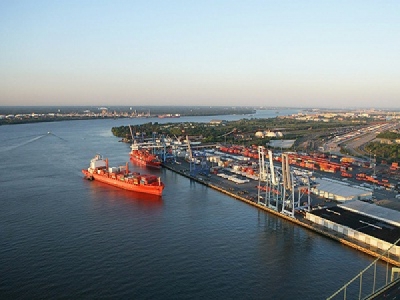
Posted on August 31, 2017
Port gateways in the US and Canada increased their container volumes from 3.2m to 45.6m teu between 1974 and 2016, Jones Lang LaSalle (JLL) said.
According to the professional services company, the 14 North American port gateways studied in its Ports Airports and Global Infrastructure (PAGI) 2017 Seaport report commanded an average annual growth rate of 6.5%.
During the residential property boom of 2001 to 2006, which also coincided with China’s formal induction into the World Trade Organisation (WTO), container volumes grew by around 9.1% per year.
Since 2010, however, volumes have increased at a 4.9% average annual rate, in line with slower economic growth tailing the Great Recession.
From 2010 to 2014, an increase in container volumes was mostly driven by export volumes, but after this point, import volumes drove container volume growth.
Trends past and future
The document also highlighted recently-emerging trends in the shipping industry and forecast developments that the area could face.
Because not all East Coast ports are currently able to able to receive Neopanamax ships, shipping companies may avoid fully using the newly-extended Panama Canal, JLL explained.
North America has seen slower container volume growth while developed economy imports have recovered.
However, while imported container volumes have improved, the industry has seen a slight increase in industrial property demand, with current market conditions more favourable to landlords.
According to JLL, some of this demand is from importers moving their logistics operations to employ more cross-docking or transloading near ports, as a result of the arrival of larger ships and the fact that e-commerce is gaining shares of retail sales.
The organisation also said that inland road and rail infrastructure capacity in North America has failed to increase in line with navigation channel and water infrastructure upgrades, resulting in congestion, which may not improve at any point in the near future.
Current political and technological threats also have the capacity to slow or reverse world economy globalisation, and in that respect JLL advises that reviewing and renegotiating trade agreements makes sense.
The company also forecast exports as something to watch out for and described the US Gulf and Southeast as an area “with high potential”.
Source: portstrategy





